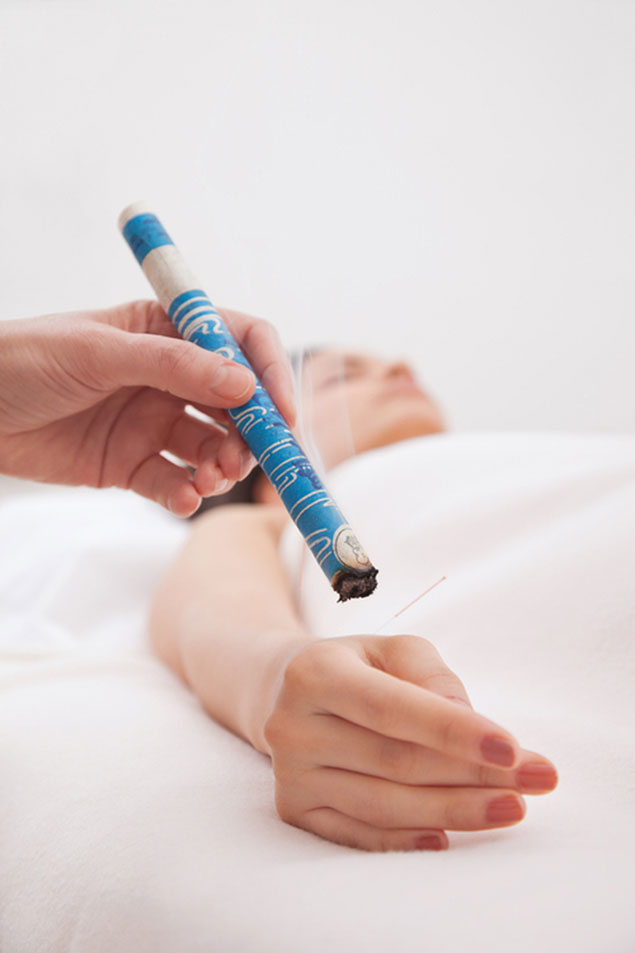

Infrared laser technology is used by dentists, physiotherapists, and now acupuncturists to decrease pain and inflammation. Although it is used by physiotherapists and dentists to treat a local and acute inflammation, acupuncturists also can use it in lieu of acupuncture needles to activate acupoints. Moxibustion involves the local heating of skin and superficial tissues at acupoints and/or at tender and painful areas. To do this, the Artemesia plant, commonly known as mugwort, is ignited in a dried and fluffy form, and it smolders at a very high temperature with the flameless, burning embers. Mugwort is a special plant that is used traditionally throughout the world for spiritual healing.

The effectiveness of infrared laser therapy on acupoints was nicely demonstrated by a designed double blind placebo study for children with headaches, where the active laser treatment on arm and leg points was significantly more effective than the Sham unit used on the same points(see here). Unlike moxibustion, infrared laser therapy is non-heating, because the total amount of energy is highly specific and limited just a specific wavelength which can be delivered in intense, small, pulses. In contrast, there is a huge range of light wavelengths emitted from a heated body like a moxibustion system. In moxibustion, its peak electromagnetic radiation is at about 2500 nanometres, although “near red” on the spectrum, is much longer than the optimal pain relief frequency discovered for infrared lasers.
Moxibustion may have impact on acupoints by warming acupoints, which represent special transitional locations in the body, to facilitate their function by increased blood flow. Infrared laser may decrease inflammation at these key points to facillitate function as well. Acupoints are mostly located at key transitional zones representing a tissue bending, changes in one level of tissue to another, and gaps between moveable tissues, all of which are prone to blockage or adhesions/fibrosis, or “stagnation and stasis” as the Chinese would say (see that blog here). From another point of view, and similar to the specific anti-inflammatory effects of infrared laser therapy, I hypothesize that moxibustion may cause other effects beyond its heating of tissues, where its near-red electromagnetic raditation may penetrate, absorb, and activate the tissues.
Acupoints are likely part of the body’s remote intelligence system, rich with blood supply and many receptors, standing ready as control centres that monitor and send information back to the brain so it can react and optimize function in the body. Whether stimulated by acupressure, needles, infrared laser, or moxibustion, there may be common mechanims or end results by which they share effects.
Read more about moxibustion or infrared laser therapy on our website.




